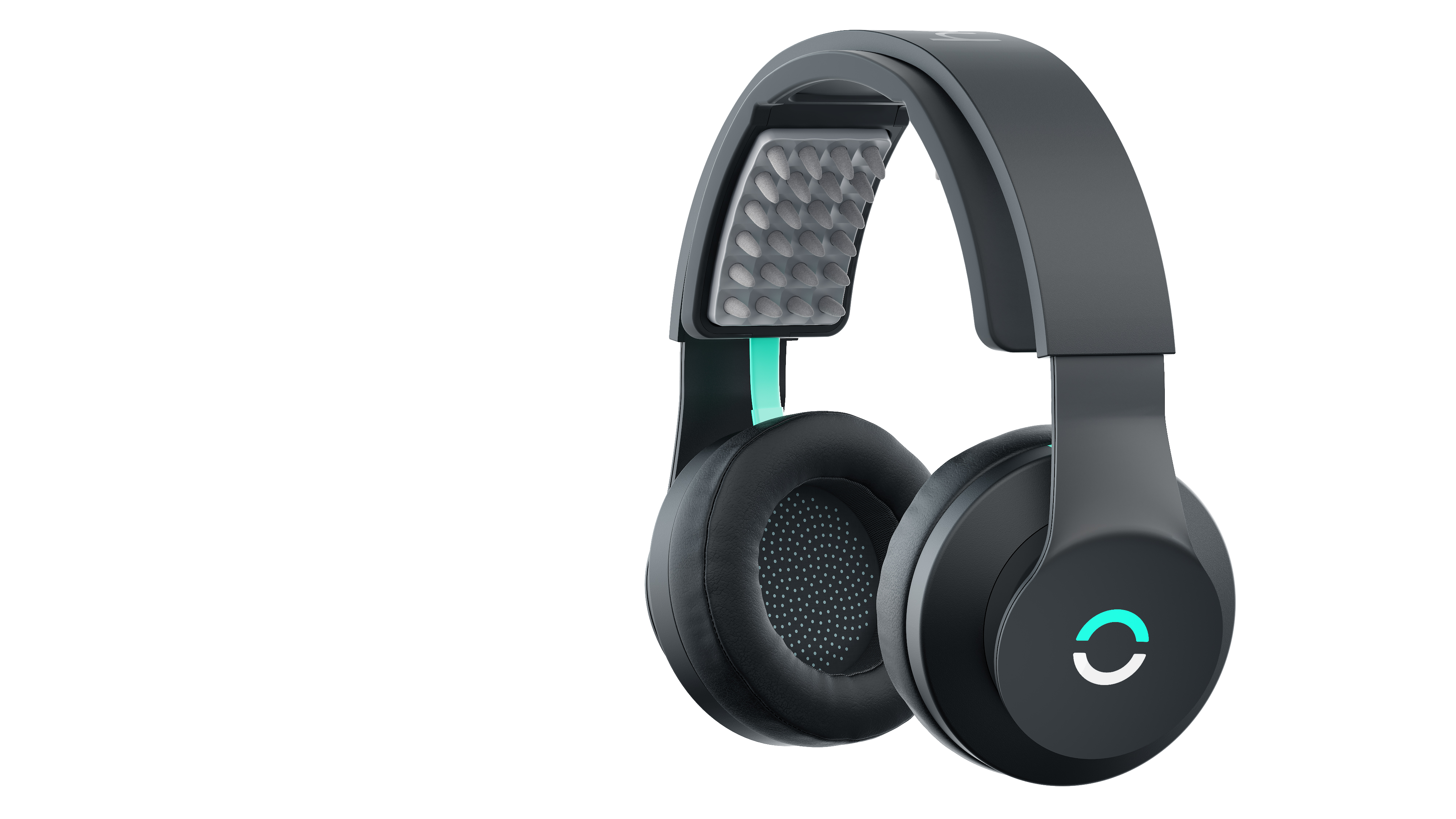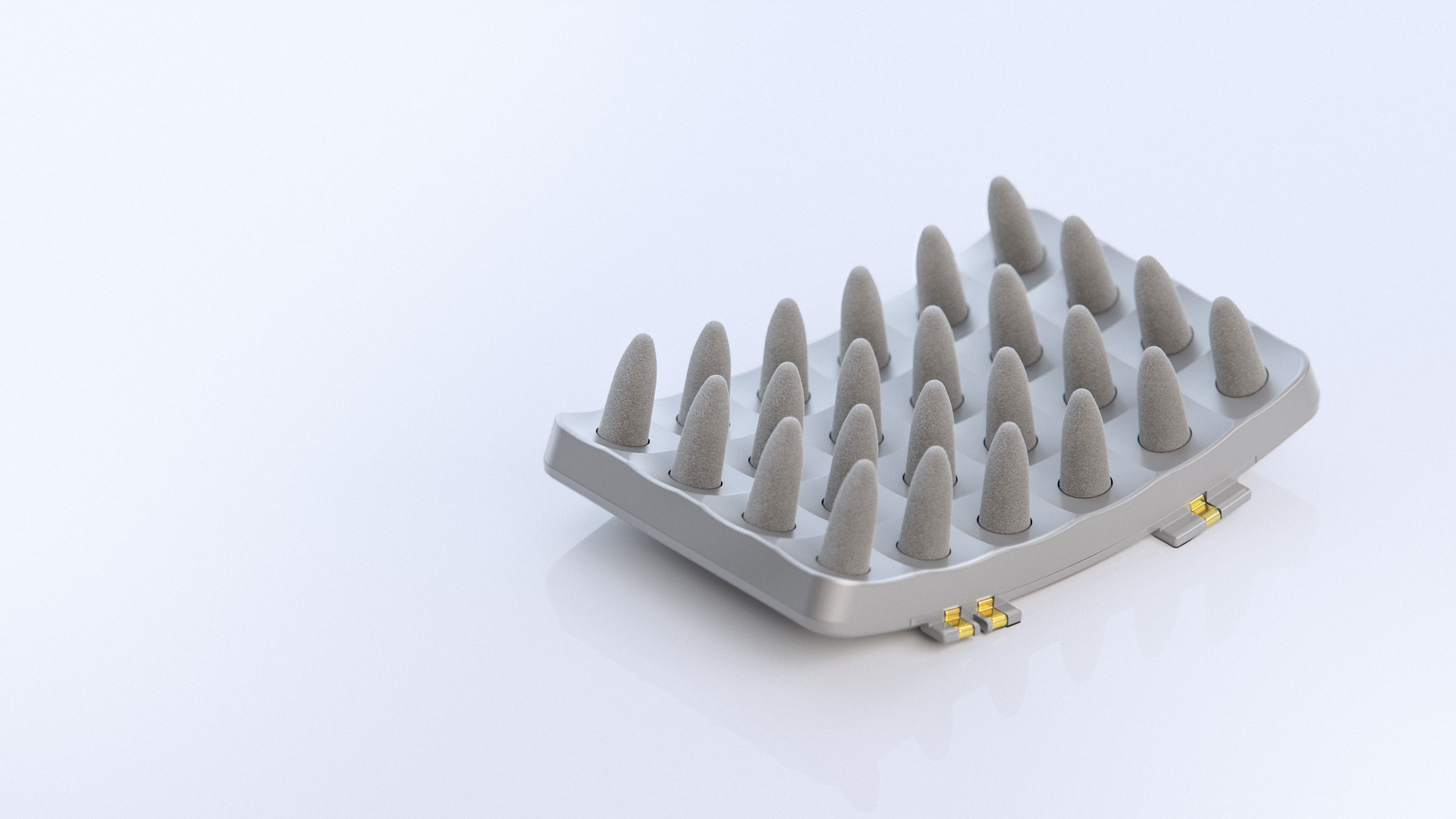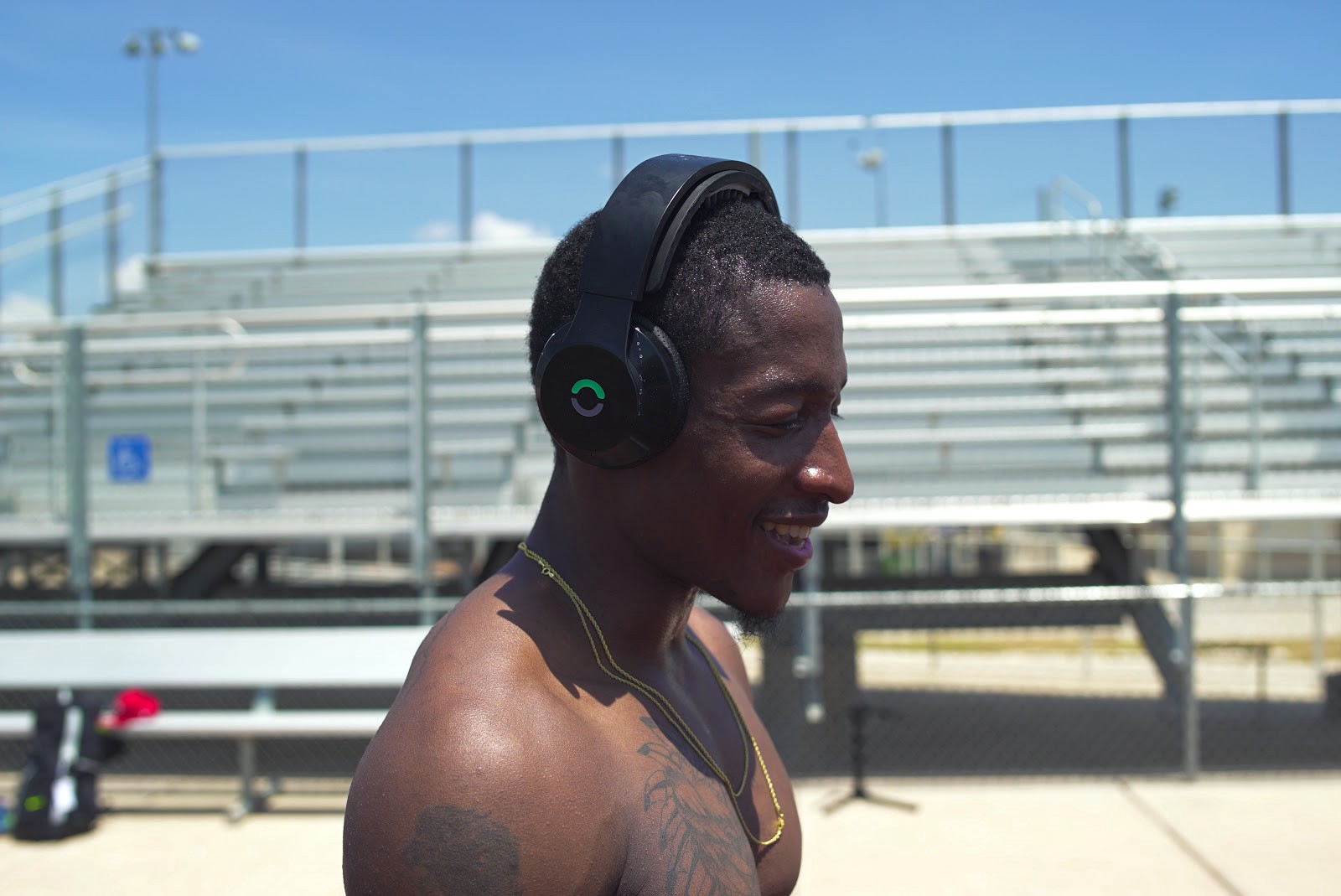Difference between revisions of "Halo Sport"
(infobox) |
|||
| Line 10: | Line 10: | ||
developer_release_commentary=<ref name="interview"/>| | developer_release_commentary=<ref name="interview"/>| | ||
consumers_release= October 2016| | consumers_release= October 2016| | ||
| − | consumers_release_commentary=| | + | consumers_release_commentary= <ref name="Olympic Athletes"/>| |
price=549| | price=549| | ||
price_commentary= (Fall 2016)<ref name= "crazy new wearable"/>| | price_commentary= (Fall 2016)<ref name= "crazy new wearable"/>| | ||
| Line 67: | Line 67: | ||
== Public & Media Impact and Presentation == | == Public & Media Impact and Presentation == | ||
| − | There are still doubts whether tDCS is really effective.<ref> STICKLAND, Eliza. Olympic Athletes Are Electrifying Their Brains, and You Can Too. IEEE Spectrum [online]. 2016, Aug 23. Available online at: http://spectrum.ieee.org/biomedical/bionics/olympic-athletes-are-electrifying-their-brains-and-you-can-too (Retrieved 12th September, 2016).</ref> Regarding Halo Sport, the user gi67 at Reddit points out that Olympians who declared that they had used Halo Sport during their training, did not significantly succeed in Olympics games: "Did tDCS enhance training? Maybe, maybe not. But no outstanding performance could be attributable to tDCS."<ref> gi67. Halo and the Olympics. Reddit [online]. 2016, Aug 25. Available online at: https://www.reddit.com/r/tDCS/comments/4zi5f2/halo_and_the_olympics/ (Retrieved 12th September, 2016).</ref> However, the user ohsnapitsnathan claims: "I think it's quite possible that tDCS use is actually much more widespread than this group and many athletes are just quiet about it because of the stigma of using "performance enhancing" technology."<ref> ohsnapitsnathan. Halo and the Olympics. Reddit [online]. 2016, Aug 25. Available online at: https://www.reddit.com/r/tDCS/comments/4zi5f2/halo_and_the_olympics/ (Retrieved 12th September, 2016).</ref> | + | There are still doubts whether tDCS is really effective.<ref name="Olympic Athletes"> STICKLAND, Eliza. Olympic Athletes Are Electrifying Their Brains, and You Can Too. IEEE Spectrum [online]. 2016, Aug 23. Available online at: http://spectrum.ieee.org/biomedical/bionics/olympic-athletes-are-electrifying-their-brains-and-you-can-too (Retrieved 12th September, 2016).</ref> Regarding Halo Sport, the user gi67 at Reddit points out that Olympians who declared that they had used Halo Sport during their training, did not significantly succeed in Olympics games: "Did tDCS enhance training? Maybe, maybe not. But no outstanding performance could be attributable to tDCS."<ref> gi67. Halo and the Olympics. Reddit [online]. 2016, Aug 25. Available online at: https://www.reddit.com/r/tDCS/comments/4zi5f2/halo_and_the_olympics/ (Retrieved 12th September, 2016).</ref> However, the user ohsnapitsnathan claims: "I think it's quite possible that tDCS use is actually much more widespread than this group and many athletes are just quiet about it because of the stigma of using "performance enhancing" technology."<ref> ohsnapitsnathan. Halo and the Olympics. Reddit [online]. 2016, Aug 25. Available online at: https://www.reddit.com/r/tDCS/comments/4zi5f2/halo_and_the_olympics/ (Retrieved 12th September, 2016).</ref> |
Other issue is the possibility that tDCS stimulation of motor cortex could be considered as a doping. However, no public policy against tDCS devices has been stated yet. WADA (the World Anti-Doping Agency) and the International Olympic Committee are still considering whether these kind of devices should be prohibited and collect information about them. <ref> BENNETTS, Julian. I got an electrical charge put straight into my brain to explore the bizarre new frontier of doping in sport. The Telegraph [online]. 2016, Aug 19. Available online at: http://www.telegraph.co.uk/olympics/2016/08/19/i-got-an-electrical-charge-put-straight-into-my-brain-to-explore/ (Retrieved 12th September, 2016).</ref> | Other issue is the possibility that tDCS stimulation of motor cortex could be considered as a doping. However, no public policy against tDCS devices has been stated yet. WADA (the World Anti-Doping Agency) and the International Olympic Committee are still considering whether these kind of devices should be prohibited and collect information about them. <ref> BENNETTS, Julian. I got an electrical charge put straight into my brain to explore the bizarre new frontier of doping in sport. The Telegraph [online]. 2016, Aug 19. Available online at: http://www.telegraph.co.uk/olympics/2016/08/19/i-got-an-electrical-charge-put-straight-into-my-brain-to-explore/ (Retrieved 12th September, 2016).</ref> | ||
Revision as of 16:15, 31 October 2016
| Halo Sport | |
|---|---|

|
|
| Category | Transcranial direct-current stimulation |
| Developer | Halo Neuroscience |
| Announced | February 2016 [1] |
| Released | Developers: 2014 [1]
Consumers: October 2016 [2] |
| Price | 549 USD (Fall 2016)[3] |
| Max output | 2.0 mA2 T 0.002 A [3] |
| Session duration | 1800 s30 minute [4] |
| Scalp location | C3 and C4 or Cz [5] [6] |
| Weight | g |
| Controls | |
| Data available | Good |
| Risk factor | Low |
| Medical prescription | No |
| https://www.haloneuro.com | |
Halo Sport is head mounted device, which provides transcranial direct-current stimulation (tDCS). It was created by Halo Neuroscience as a tDCS device, which could be safely used outside laboratories. The device consists of a wearable headset on which are placed two electrodes and a neurostimulator, which is powered by battery.[8] The electrodes are entitled "primers" by Halo Neuroscience and tDCS is reffered as "neuropriming".[7]
The device stimulates motor cortex. If it is used during a training, it is supposed to enhance motoric abilities of its users,[9] which could make the training more effective. This feature was appraised by several sport organizations as US Ski and Snowboard Association, Michael Johnson Performance, or Invictus that take a part in Halo Sport's testing.[3] Halo Sport is also used by U.S. Department of Defense for improving skills of special operations forces.[10]
Contents
Main characteristics
Halo Sport is standalone fully enclosed device. It contains headset where are placed two or three electrodes. The electrodes are placed at C3, C4 resp. Cz. In contrast to other transcranial direct-current stimulation's devices the position of electrodes is settled. Electrodes can be removed, but not placed to any other location on scalp.
Purpose
The main purpose of the device is to enhance physical abilities of its user through tDCS.
Company & People
- Daniel Chao - co-founder and CEO of Halo Neuroscience
- Brett Wingeier - co-founder and CTO of Halo Neuroscience
- Amol Sarva - co-founder and Board Member of Halo Neuroscience
- Reed Hundt - adviser
- Susan Paley - adviser
- Gary Abrams - adviser
- Nick Drake - adviser
- Mark George - adviser
- Andy Walsh - adviser
- Mario Schlosser - adviser[11]
Important Dates
Enhancement/Therapy/Treatment
Ethical & Health Issues
Public & Media Impact and Presentation
There are still doubts whether tDCS is really effective.[2] Regarding Halo Sport, the user gi67 at Reddit points out that Olympians who declared that they had used Halo Sport during their training, did not significantly succeed in Olympics games: "Did tDCS enhance training? Maybe, maybe not. But no outstanding performance could be attributable to tDCS."[12] However, the user ohsnapitsnathan claims: "I think it's quite possible that tDCS use is actually much more widespread than this group and many athletes are just quiet about it because of the stigma of using "performance enhancing" technology."[13]
Other issue is the possibility that tDCS stimulation of motor cortex could be considered as a doping. However, no public policy against tDCS devices has been stated yet. WADA (the World Anti-Doping Agency) and the International Olympic Committee are still considering whether these kind of devices should be prohibited and collect information about them. [14]
Public Policy
Related Technologies, Projects or Scientific Research
References
- ↑ 1.0 1.1 BROWN, Ayliffe. Neurotechnology To Unlock Human Potential: Interview with Halo Neuroscience CEO, Dr. Daniel Chao. Wearable Technologies [online]. 2016, June 28. Available online at: https://www.wearable-technologies.com/2016/06/neurotechnology-to-unlock-human-potential-interview-with-halo-neuroscience-ceo-dr-daniel-chao/ (Retrieved 31st August, 2016).
- ↑ 2.0 2.1 STICKLAND, Eliza. Olympic Athletes Are Electrifying Their Brains, and You Can Too. IEEE Spectrum [online]. 2016, Aug 23. Available online at: http://spectrum.ieee.org/biomedical/bionics/olympic-athletes-are-electrifying-their-brains-and-you-can-too (Retrieved 12th September, 2016).
- ↑ 3.0 3.1 3.2 BARNWELL, Aliya. This crazy new wearable uses 'neurostimulation' to prime your brain and body for exercise. Digital Trends [online]. 2016, Mar 11. Available online at: http://www.digitaltrends.com/wearables/neurostimulation-headphones-boost-workout-effectiveness/ (Retrieved 1st September, 2016).
- ↑ MANEY, Kevin. Halo claims to make you jump higher, think faster, remember longer. Newsweek [online]. 2016, Feb 10. Available online at: http://europe.newsweek.com/halo-neuroscience-brain-stimulation-424829?rm=eu (Retrieved 31st August, 2016).
- ↑ 5.0 5.1 Halo Neuroscience. Bihemispheric Transcranial Direct Current Stimulation with Halo Neurostimulation System over Primary Motor Cortex Enhances Rate of Force Development in an Isometric Lateral Pinch Force Task. Halo Sport [online]. 2016, Feb 10. Available online at: https://halo-website-static-assets.s3.amazonaws.com/whitepapers/mvc.pdf (Retrieved 2nd September, 2016).
- ↑ Halo Neuroscience. A Real World Investigation into the Benefits of Transcranial Direct Current Stimulation to the Primary Motor Cortex on Muscular Performance in Elite Athletes. Halo Sport [online]. 2016, Feb 10. Available online at: https://halo-website-static-assets.s3.amazonaws.com/whitepapers/mjp.pdf (Retrieved 2nd September, 2016).
- ↑ 7.0 7.1 https://www.haloneuro.com/set-up (Retrieved 2nd September, 2016).
- ↑ Halo Neuroscience. Bihemispheric Transcranial Direct Current Stimulation with Halo Neurostimulation System over Primary Motor Cortex Enhances Fine Motor Skills Learning in a Complex Hand Configuration Task. Halo Sport [online]. 2016, Feb 10. Available online at: https://halo-website-static-assets.s3.amazonaws.com/whitepapers/cct.pdf (Retrieved 2nd September, 2016).
- ↑ https://www.haloneuro.com/press (Retrieved 2nd September, 2016).
- ↑ Halo Neuroscience. Department of Defense Selects Halo Sport to Train Special Ops Forces. Halo Neuroscience Company News [online]. 2016, Aug 4. Available online at: https://medium.com/halo-neuroscience-company-news/department-of-defense-selects-halo-sport-to-train-special-ops-forces-e0fd3b8d8c6a#.no7clt9vr (Retrieved 2nd September, 2016).
- ↑ Halo Neuroscience. Company. Halo Neuroscience [online]. Available online at: <https://www.haloneuro.com/company> (Retrieved 12th September, 2016).
- ↑ gi67. Halo and the Olympics. Reddit [online]. 2016, Aug 25. Available online at: https://www.reddit.com/r/tDCS/comments/4zi5f2/halo_and_the_olympics/ (Retrieved 12th September, 2016).
- ↑ ohsnapitsnathan. Halo and the Olympics. Reddit [online]. 2016, Aug 25. Available online at: https://www.reddit.com/r/tDCS/comments/4zi5f2/halo_and_the_olympics/ (Retrieved 12th September, 2016).
- ↑ BENNETTS, Julian. I got an electrical charge put straight into my brain to explore the bizarre new frontier of doping in sport. The Telegraph [online]. 2016, Aug 19. Available online at: http://www.telegraph.co.uk/olympics/2016/08/19/i-got-an-electrical-charge-put-straight-into-my-brain-to-explore/ (Retrieved 12th September, 2016).


